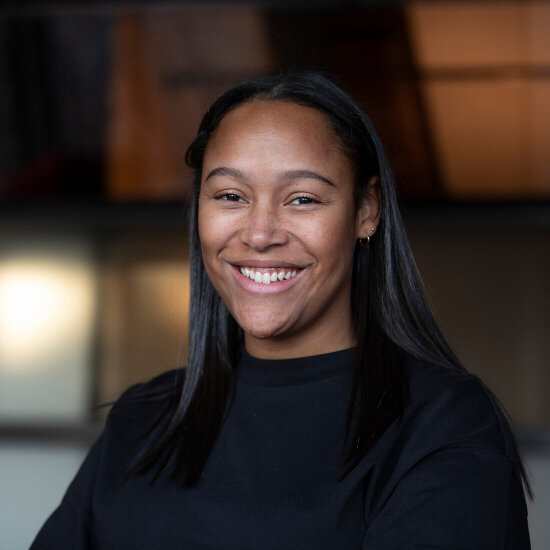In Norway, around 2500 pupils in primary and lower secondary education have hearing loss. Many – particularly those using sign language – are not given sufficient attention and follow-up. That can cause problems, both educationally and socially.
This is what Kristin Marie Brudeseth and Tina Mee Johnsen want to do somehing about. In their diploma dissertation at the Oslo School of Architecture and Design they have joined in with pupils, teachers and specialists to learn how six- and seven-year-olds with hearing loss can be better included in everyday school life.
A feeling of not being heard
When the two design students asked children with hearing loss about their school life, the feedback was depressing. These pupils feel neither seen nor heard at school. Many children find that they, personally, have to ask the teacher to use a microphone in class. Pupils in primary as well as lower and upper secondary school talked about a school day with few friends, being outsiders, and discriminated against.

Photo: Tina Mee Johnsen, Kristin Brudeseth
Based on this insight, Kristin Marie Brudeseth and Tina Mee Johnsen began working on the service they called Lydstyrke. The objective is to provide teachers and pupils with more knowledge about hearing and to create a more inclusive classroom environment.
Lydstyrke is aimed at the first and second year of primary school, since the early years are fundamental for the whole school career. The service has been developed in collaboration with Statped, a government special education support service for local and regional authorities.
Lydstyrke consists of a variety of content, such as class exercises, co-creation and storytelling. All content is inspired by what children and young people with hearing loss themselves have talked about – and drawn.
Lydstyrke makes it easier for teachers to acquire special knowledge and to feel more secure in terms of how they can adapt the teaching. For special needs teachers sharing knowledge about hearing and adaptation becomes easier.

Photo: Tina Mee Johnsen, Kristin Brudeseth
When a child is heard, parents or guardians have greater trust in the school and can make a more positive contribution through the sharing of knowledge of the child’s needs. And not least, Lydstyrke gives the children a tool which they can use to express themselves and be heard, and for the other pupils to learn to be mindful of each other, including those with hearing loss.
The vision of the students behind the service is that Lydstyrke will help to make inclusion and adaptation obvious elements at school, so that all pupils will be able to experience the happy and secure life in school which they are entitled to by law. They are hoping the service can be developed for use in kindergartens and nursery schools, as well as in all compulsory education. They are also hopeful that it can further develop exercises directed at pupils using sign language in normal schools and maybe also at pupils with other functional impairments.
Brief facts about the project
Lydstyrke: A tool to create an inclusive class environment.
By: Kristin Marie Brudeseth and Tina Mee Johnsen, Master of Design, The Oslo School of Architecture and Design
Design disciplines: Service design, Interaction design, Design research
Recipient of the DOGA Award
This project has received the DOGA Award for Design and Architecture for its outstanding qualities and for showing how strategic use of design and architecture create important social, environmental and economic value.
These are three reasons why this is an exemplary project:
- Safeguards the rights of children
With Lydstyrke, pupils with hearing loss will benefit from better adaptation both in and outside the classroom. This promotes better mental health and quality of life. The design of the service is based on the UN Convention on the Rights of the Child and the Convention on the Rights of Persons with Disabilities.
- Inclusive design benefits everyone
Inclusive design is good design for all. Better organisation of the school day for pupils with hearing loss will benefit all the children.
- Learning for life
With Lydstyrke the whole class gains understanding, knowledge and the power of influence to shape a classroom environment where everyone learns better. For pupils, learning to include is learning for life.


